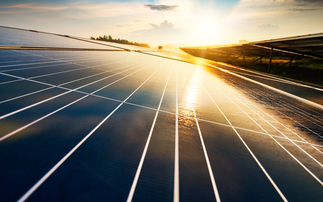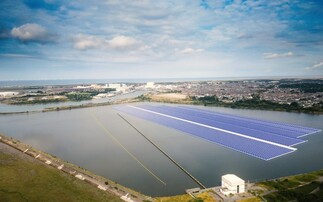David Casale of clean tech-focused merchant bank Turquoise International argues that solar power could revolutionise the global energy market
With PV prices falling, efficiencies increasing and global installations doubling in volume every year, has a clear winner emerged in the race to find an economic low carbon energy source for the next 100 years?
Whilst recent statistics released by the International Energy Agency have stated that renewable power has reached nearly 15 per cent of worldwide energy generation include traditional hydroelectric generation they hide the true scale of the dash for solar. Combine this with international targets in 66 countries to substitute more than a quarter of non-renewable global energy consumption before 2020 and we see that solar is at the start of what could become a very material and disruptive run for everyone else.
The revolution is coming
Over the past decade, the global impact of solar power has increased dramatically. Although previously considered a minority solution due to its perceived high costs and intermittent production capabilities, ongoing research and technological development has seemingly turned such preconceptions upside-down.
The latest research from America, for example, has identified a notable fall in installation prices. Homeowners are now, on average, paying 80 per cent less for the installation of PV panels, compared to the same period in 2008. With every set-up generating significant long-term returns and typically taking less than a day to fully install, the technology has not only changed the way in which we view environmental alternatives, but also provided a cost-effective tactic to minimise reliance on mains supply.
But it's not just consumers who are seeing the light. Earlier this year, Wal-Mart announced a group-wide eco initiative to substitute its entire energy consumption with renewable alternatives before 2020. Partner this with the announcement of similar strategies by almost every single top 50 global company and we start to see the enormous impact solar is making worldwide.
The facts are simple. Solar is sexy, straightforward and delivers superb results. What's more, it's getting cheaper than, for example, nuclear power, it's far quicker to build than any other energy technology, the public like it and, best of all, it's fuel is delivered at home reliably and completely free! Solar seems to tick all the boxes and, for that reason, is taking the global energy market by storm.
Innovative influence
For the first time in solar's history, the technology is quickly overtaking more traditional reserves as an effective and sustainable global resource. In some markets, the renewable alternative is surpassing fossil fuels and can account for more than half of consumption. Germany, for example, has already installed more than 35GW of solar in the past 10 years, while the US and UK are each targeting significant consumption goals before 2020. Notoriously sunny countries, like Saudi Arabia, are taking the benefits even further, using the technology as an economic driver - creating a significant volume of new jobs in the sector and using the free power alternative to preserve oil for export.
Storage companies, like Isentropic and Moixa in the UK, are driving innovation to meet this trend, developing ingenious ways to store solar at scale and in the home. Although some way off domestic use, considerable R&D into further developing technologies has already shown massive breakthroughs and many storage prototypes are already being trialled in large commercial solar sites.
It seems, therefore, that solar is racing ahead - overtaking traditional resources and changing the face of the energy market. However, a few hurdles remain before the renewable resource can cross the finish line.
A thorn in the side
Whilst in sunnier climates and where no grid currently exists the economics are competitive without subsidy, to encourage the uptake of renewable technologies in North West Europe, many countries have introduced subsidy initiatives to sweeten the deal of switching to solar. These financial incentives counterbalance the initially high installation costs and provide ongoing motivation to maintain a high-volume of self-generated energy.
In the UK, for example, homeowners and businesses can benefit from the Feed-In Tariff (FIT), Green Deal and Renewable Heating Incentive (RHI) to name but a few. These financial support programmes provide a cost-effective way to switch to green alternatives, as well as providing ongoing return for generating renewable energy.
However, despite the promises of ongoing support and continued financial backing, falling installation costs have made home generation more cost-effective than ever before. Many countries, therefore, are now debating the requirement for these programmes and looking to reduce or disband subsidies going forwards.
In practice, this could make little overall financial difference, as the cost of solar panels continues to drop; however, a loss of incentives has the potential to dampen the current demand for installing eco-solutions.
There is a significant challenge therefore, not only to maintain the momentum of solar, but also to retain demand through an uncertain period of change in the energy sector.
How does solar slot in to the future?
Despite a few small barriers on the solar horizon, its influence is reaching far beyond the panels installed to date. The technology is being deployed at rates faster than any other renewable technology and in many cases being used in preference to more traditional resources. In Europe, the balance sheets of the major utilities are decimated and fossil plants are becoming obsolete. Utilities will also find their cost of capital increasing as they no longer own the demand increase from consumers. Home generators look like highly efficient users to a traditional utility.
Although subsidies may not last forever, the cost of panels will fall further as manufacturing capacity increases and economies of scale take further effect. Customers left out of the energy market by tired and grey utilities born in an age of coal and pylons will emerge as self-generators lowering carbon emissions by 80 per cent - proud and engaged advocates of new companies, rather than neglected customers of the big six.
The stage is therefore set for the continued march of solar and the emergence of effective storage technologies to revolutionise the way energy is used, generated, owned and distributed. In short, the race isn't won, but there is a horse coming up fast on the rails and it looks set for a very strong finish.
David Casale is a chartered engineer and director at London-based Cleantech merchant bank Turquoise International, which specialises in energy and the environment








